.webp)
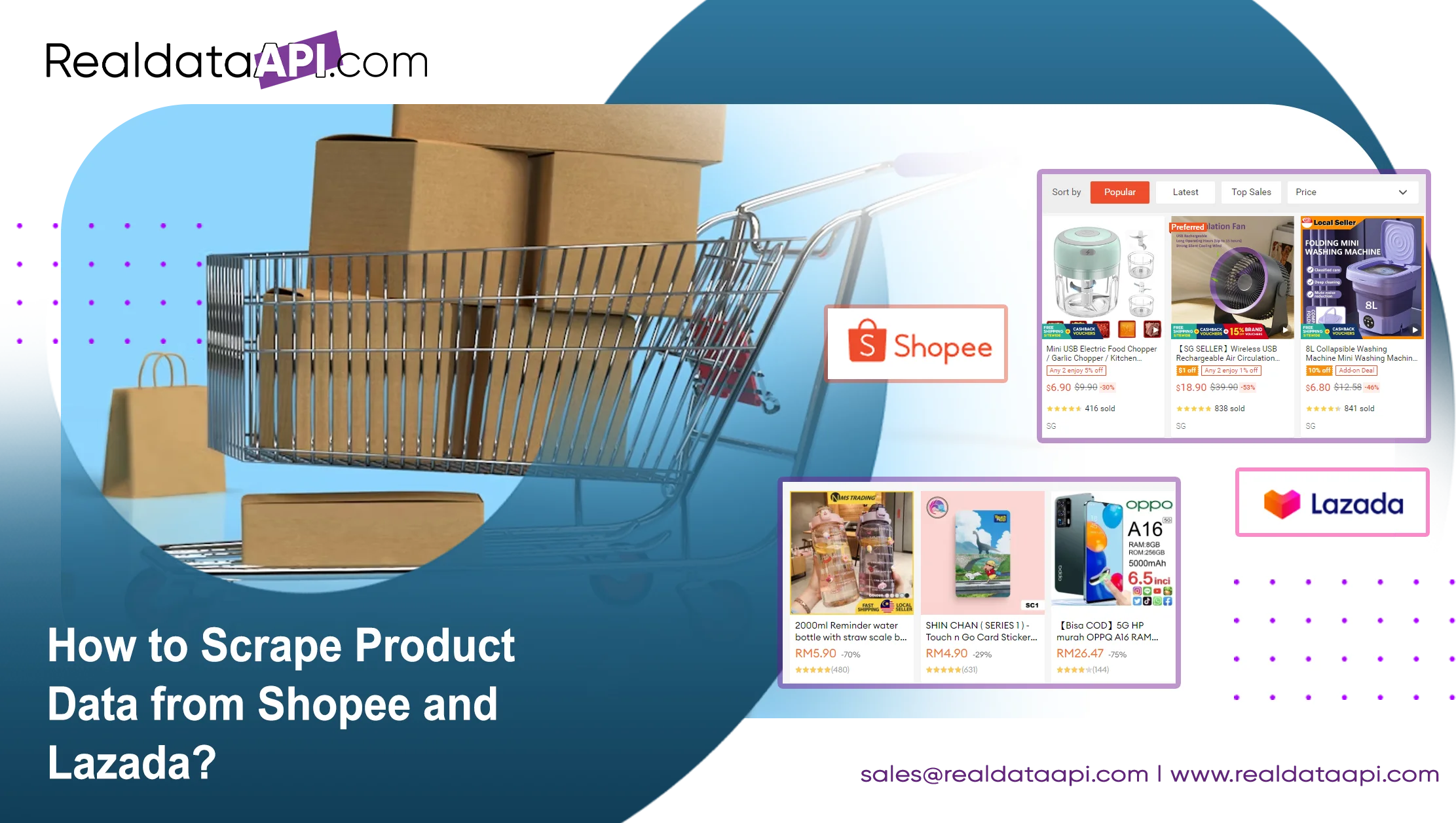
Introduction
In the ever-evolving world of eCommerce, access to real-time, structured data is vital for businesses to stay competitive. Platforms like Shopee and Lazada, two of Southeast Asia's largest eCommerce platforms, offer valuable insights through their product listings, reviews, prices, and inventory data. Learning how to scrape product data from Shopee and Lazada is essential for businesses, developers, or analysts seeking a competitive advantage.
This blog will provide a step-by-step guide on efficiently performing Shopee and Lazada data scraping while addressing common challenges and legal considerations.
What is eCommerce Data Scraping?
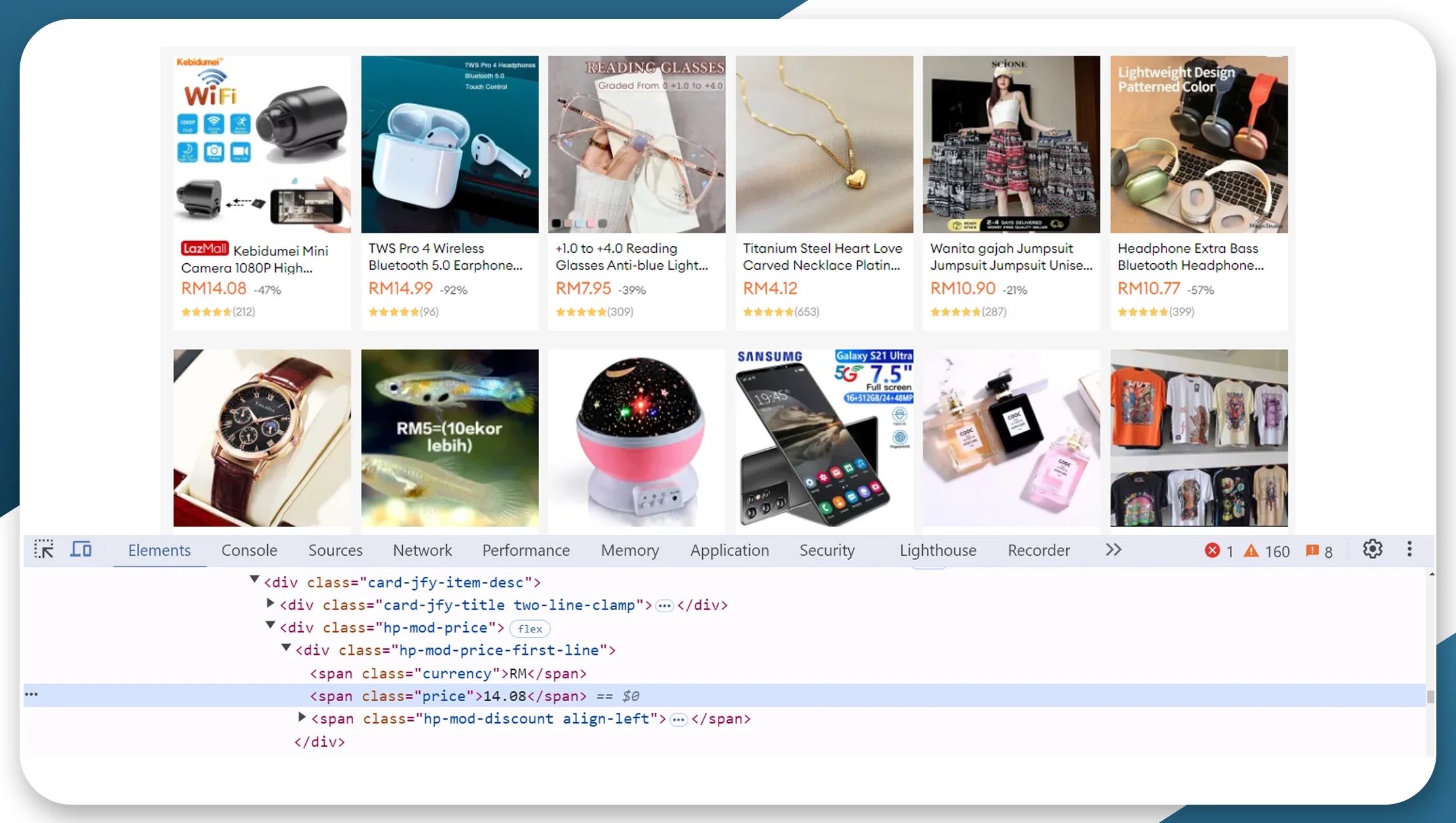
eCommerce data scraping involves extracting structured data from online platforms, such as product names, prices, ratings, reviews, stock availability, etc. This data is then processed for analysis, enabling businesses to understand consumer behavior better, optimize pricing strategies, or even benchmark competitors' product offerings.
Why Scrape Product Data from Shopee and Lazada?
Scraping product data from Shopee and Lazada can offer multiple benefits for your business:
Competitive Analysis: Track pricing and product availability for real-time insights into competitors' strategies.
Market Research: Understand consumer behavior, demand trends, and review patterns.
Price Monitoring: Monitor fluctuating prices to optimize your pricing models.
Inventory Management: Analyze stock levels to assess market demand and supply chain issues.
Now that we know the advantages let's move on to how you can scrape product data from Shopee and Lazada effectively.
Step-by-Step Guide to Scrape Product Data from Shopee and Lazada
1. Understand Legal Implications
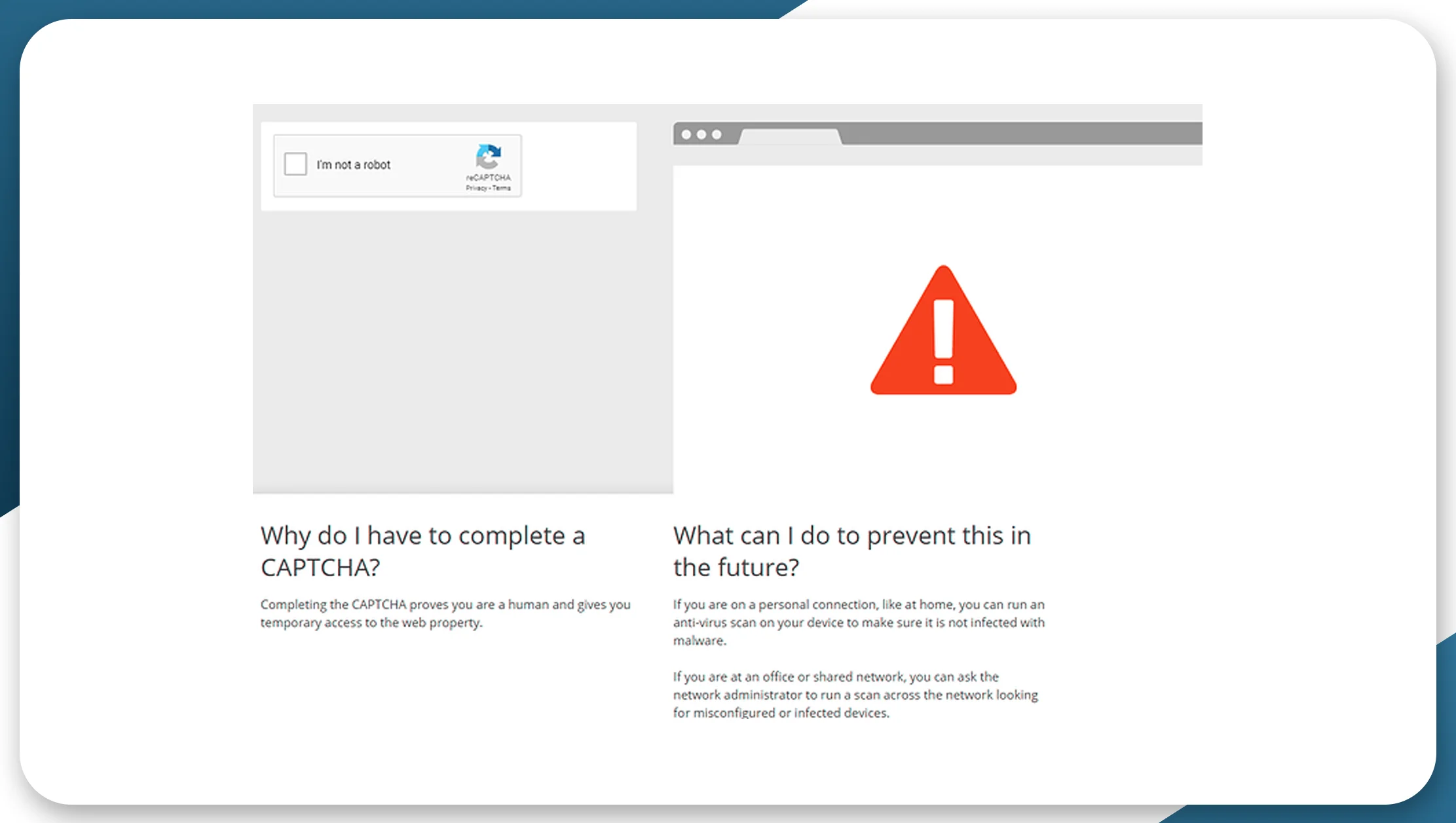
Before jumping into the technical process, knowing the legal concerns related to scraping is crucial. Both Shopee and Lazada have Terms of Service that explicitly prohibit unauthorized scraping. Violating these terms may block your IP or, worse, legal action. To comply with local laws, consider requesting access to the platform's API or focus on publicly available data.
2. Choose the Right Tools for Shopee and Lazada Data Scraping
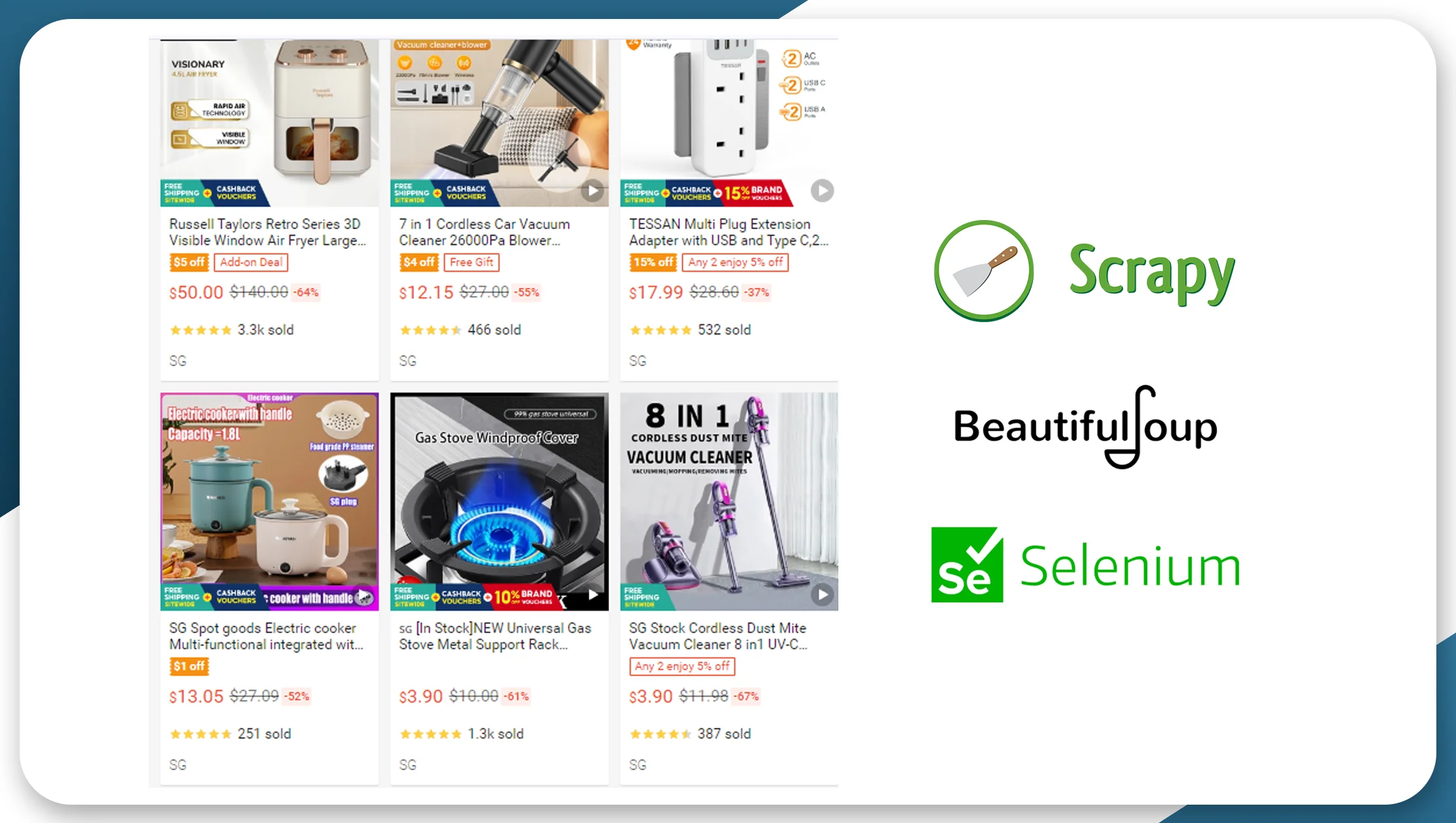
There are several tools available to facilitate data collection from Shopee and Lazada. Depending on the complexity of your scraping project, you may choose from the following:
BeautifulSoup: A Python library used to scrape static pages.
Scrapy: An open-source web scraping framework.
Selenium: A tool that automates browsers, excellent for scraping dynamic content.
For dynamic websites like Shopee and Lazada, using Scrapy or Selenium is recommended since they effectively handle JavaScript-based content.
3. Inspect the Website for Data
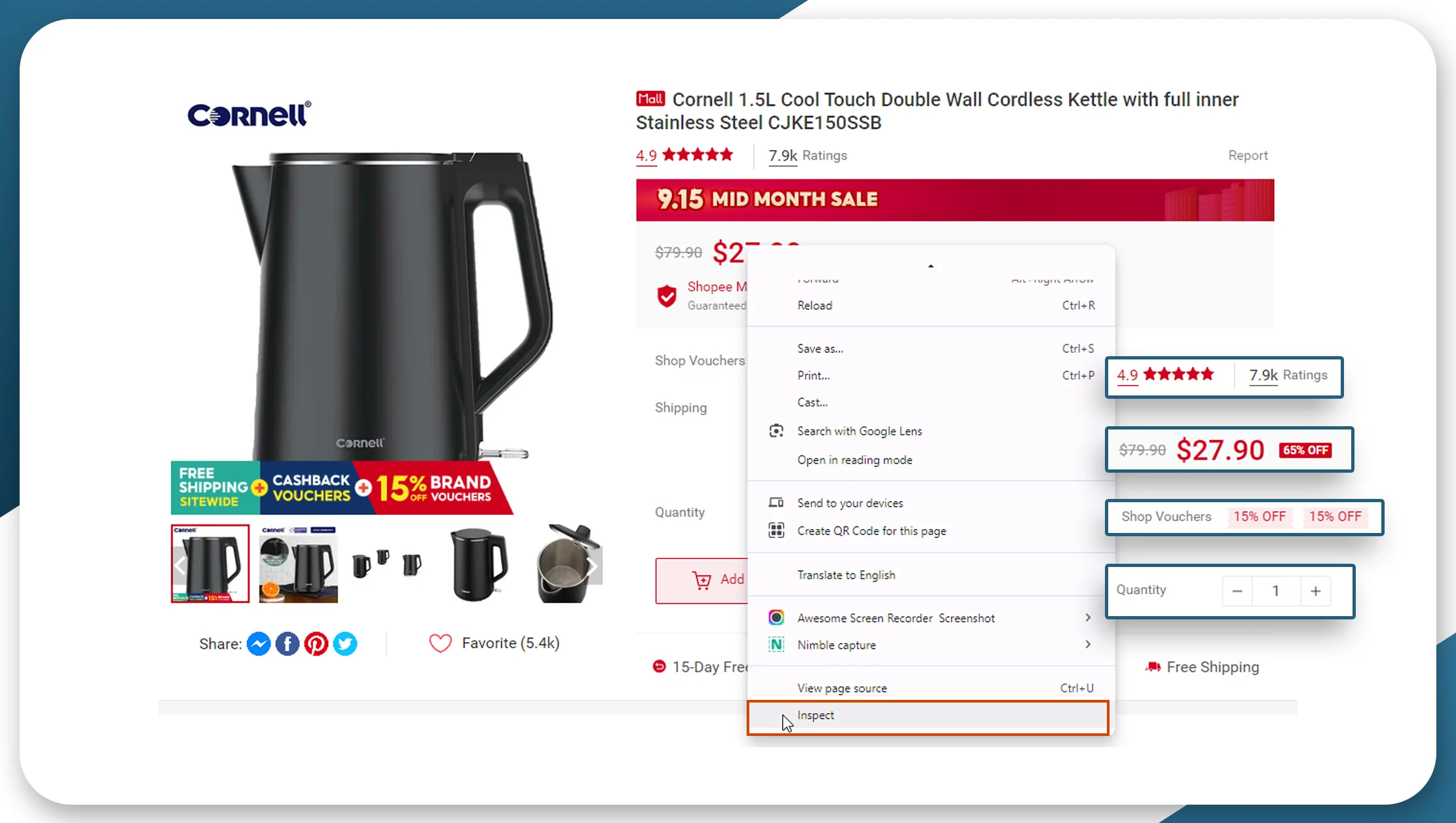
To efficiently extract product data from Shopee and Lazada, you must first inspect the structure of these platforms. Right-click on any product page and select "Inspect Element" to view the underlying HTML structure. This will allow you to identify the specific elements you want to scrape, such as:
Product Title
Price
Ratings
Reviews
Stock Availability
Seller Information
For example, in Shopee, you might find the product title nested under < div class="shopee-product-title">. In Lazada, product prices might be stored within a < span class="lazada-product-price"> tag.
4. Write a Basic Scraper for Shopee
Here's an example of a simple Shopee product data scraping script using BeautifulSoup in Python.
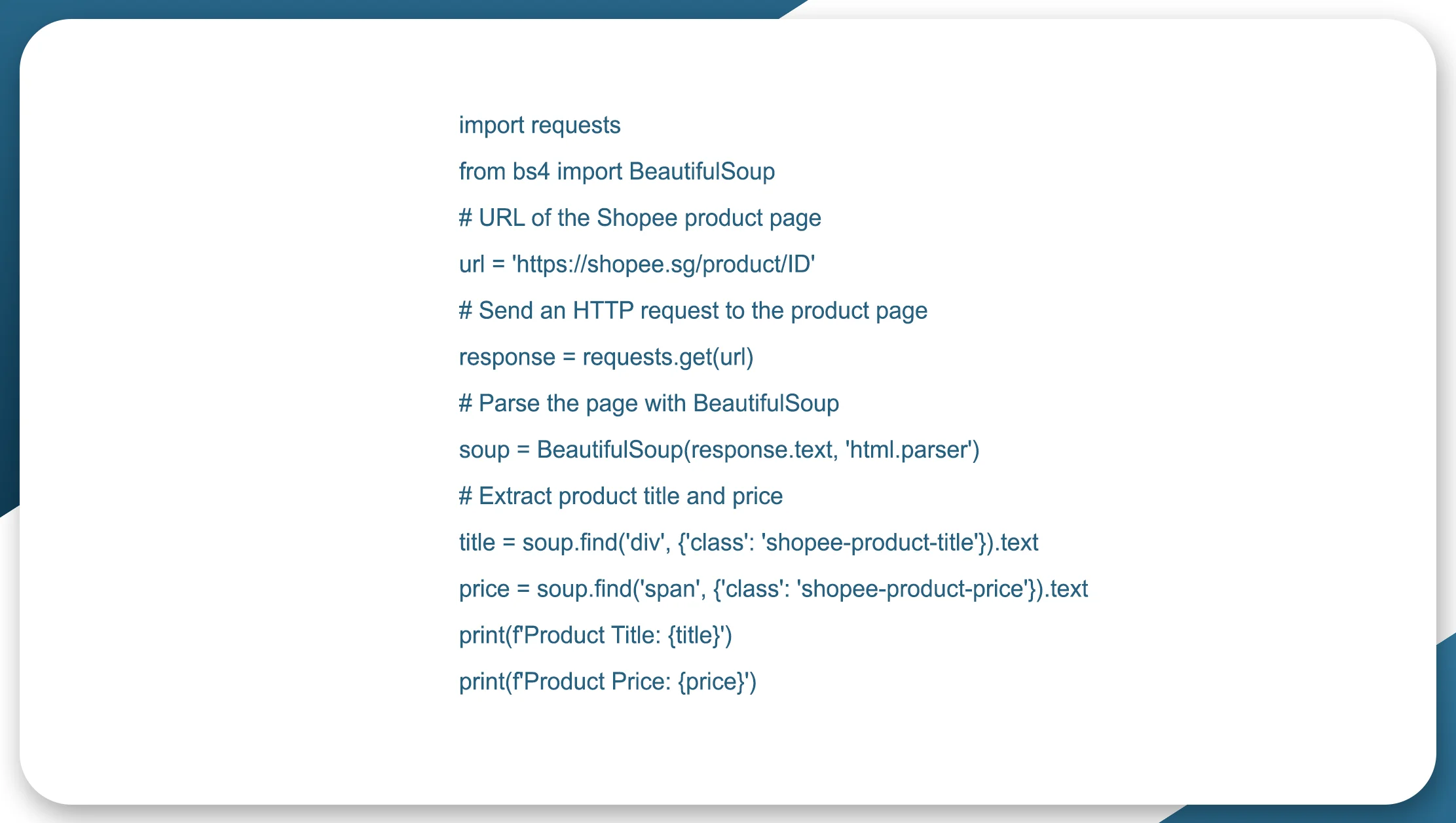
This script can be expanded to extract essential fields such as ratings, reviews, and availability.
5. Write a Basic Scraper for Lazada
Similarly, here's a Lazada product data scraping example using BeautifulSoup.
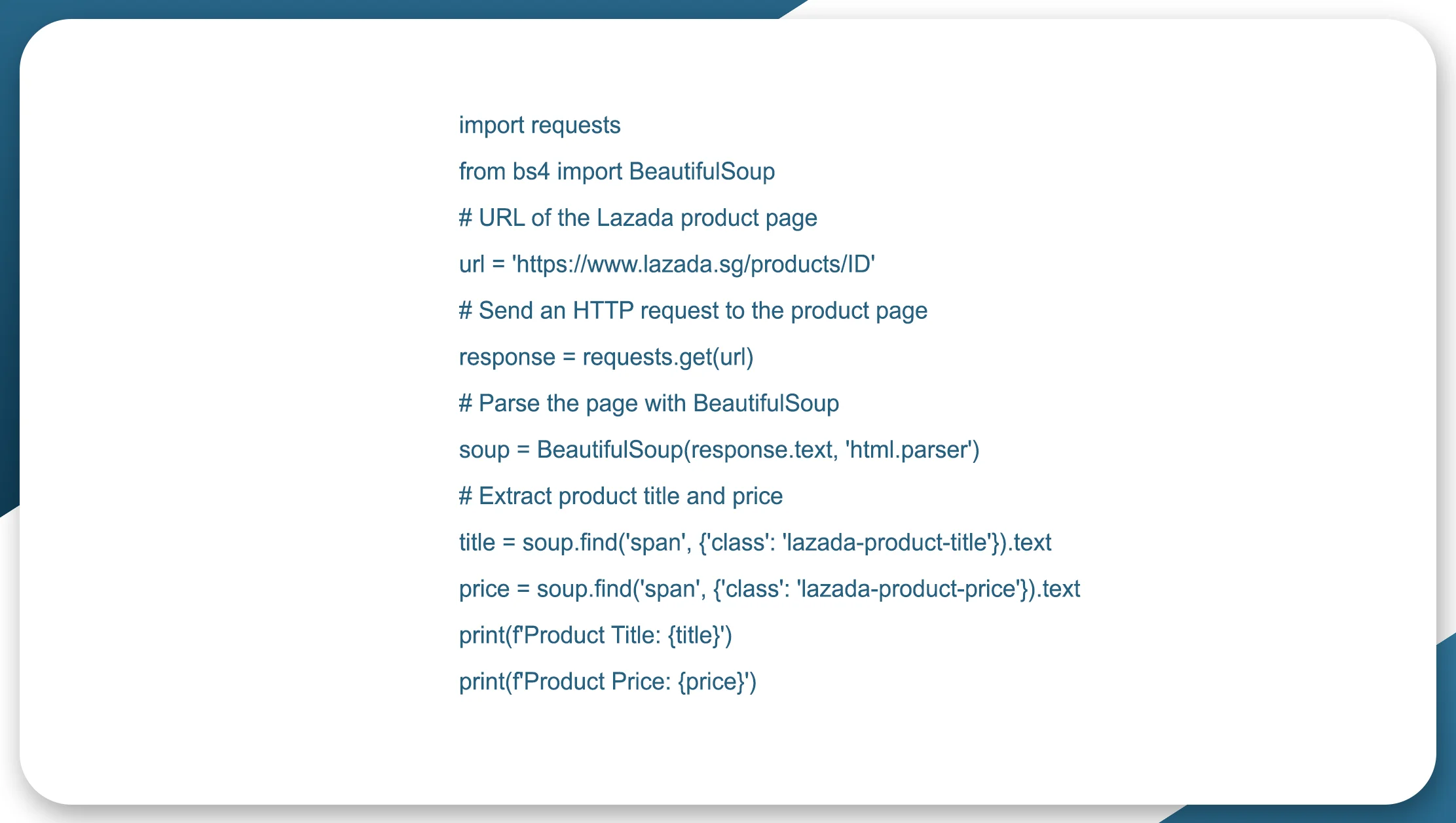
This script is designed to extract product data from Shopee and Lazada efficiently. Similar to Shopee, it can be expanded to scrape reviews, ratings, and stock data.
6. Handling Dynamic Content
Both Shopee and Lazada use dynamic content rendering via JavaScript, which means the data is loaded asynchronously. To handle this, tools like Selenium or Puppeteer can automate interactions with the website, allowing you to extract data that only appears after scrolling or clicking specific buttons.
Here's a basic example of Selenium for Shopee and Lazada product data extraction:
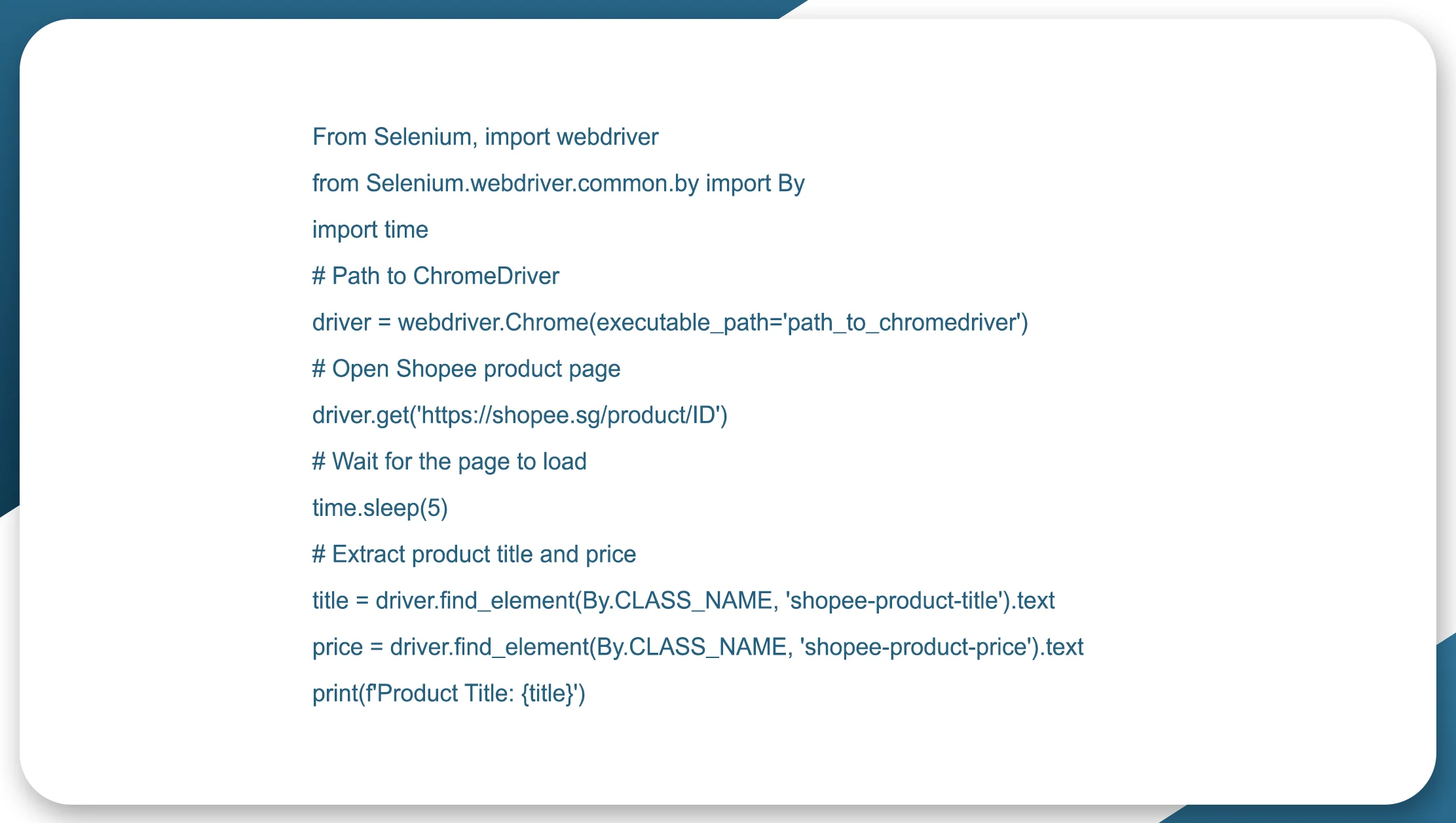
This same approach can be adapted for Lazada data scraping by changing the HTML tags and class names accordingly.
7. Overcoming CAPTCHA and Rate Limiting
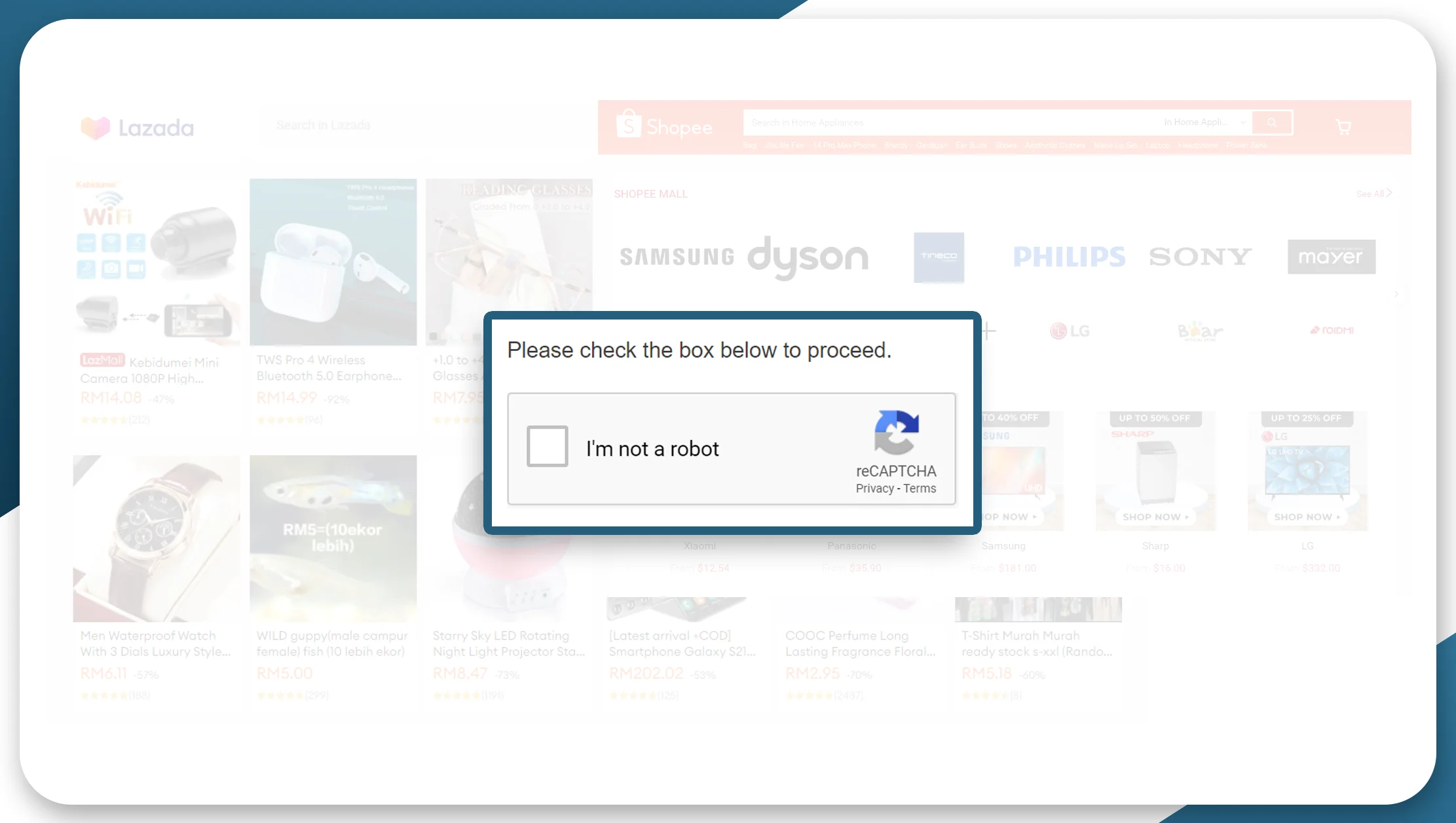
Shopee and Lazada use CAPTCHAs and rate-limiting mechanisms to prevent bots from scraping their platforms. This makes large-scale scraping tricky. You can overcome these challenges by using:
Rotating Proxies: Distribute requests across multiple IP addresses to avoid getting blocked.
Headless Browsers: Use headless browsers to mimic human interactions and bypass detection.
CAPTCHA Solvers: Utilize third-party services to solve CAPTCHA challenges in real-time.
8. Structuring the Data
After successfully scraping product data from Shopee and Lazada, it's essential to structure and store it efficiently. You can store the data in CSV files, databases like MySQL or MongoDB, or even feed it into data analytics pipelines for deeper analysis.
For example, a typical Shopee and Lazada product dataset might look like this:
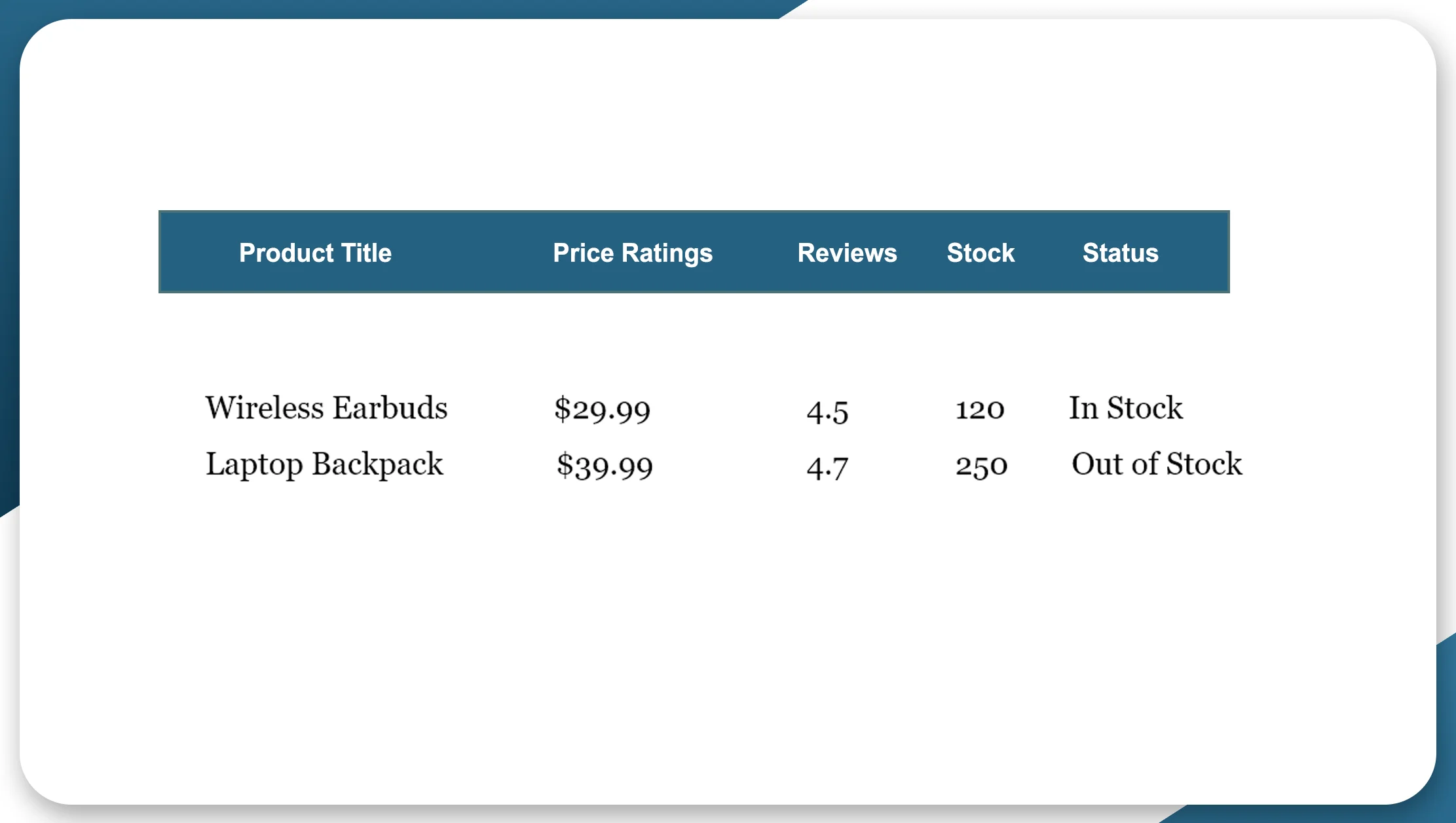
This structured data can be used for further analysis, helping businesses make informed decisions.
9. Avoiding Common Pitfalls
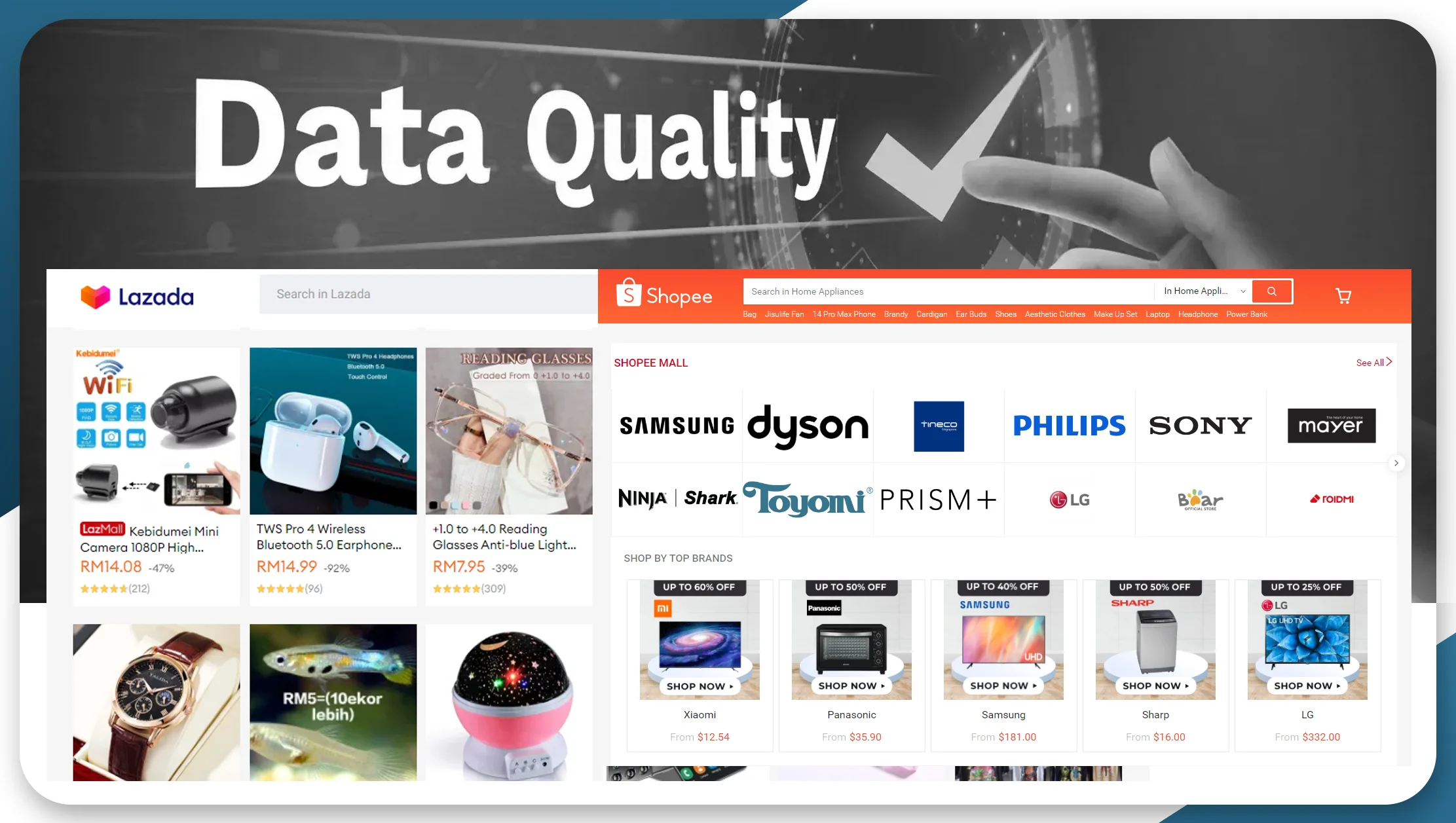
Data Quality: Ensure that your scraped data is accurate by frequently verifying it against live data from Shopee and Lazada.
Duplicate Entries: Avoid duplicating product entries by checking for unique identifiers, such as product IDs.
Scaling Issues: When dealing with large datasets, ensure your scraping solution can handle the volume without overwhelming your system resources.
10. Use Cases of Shopee and Lazada Product Data Scraping
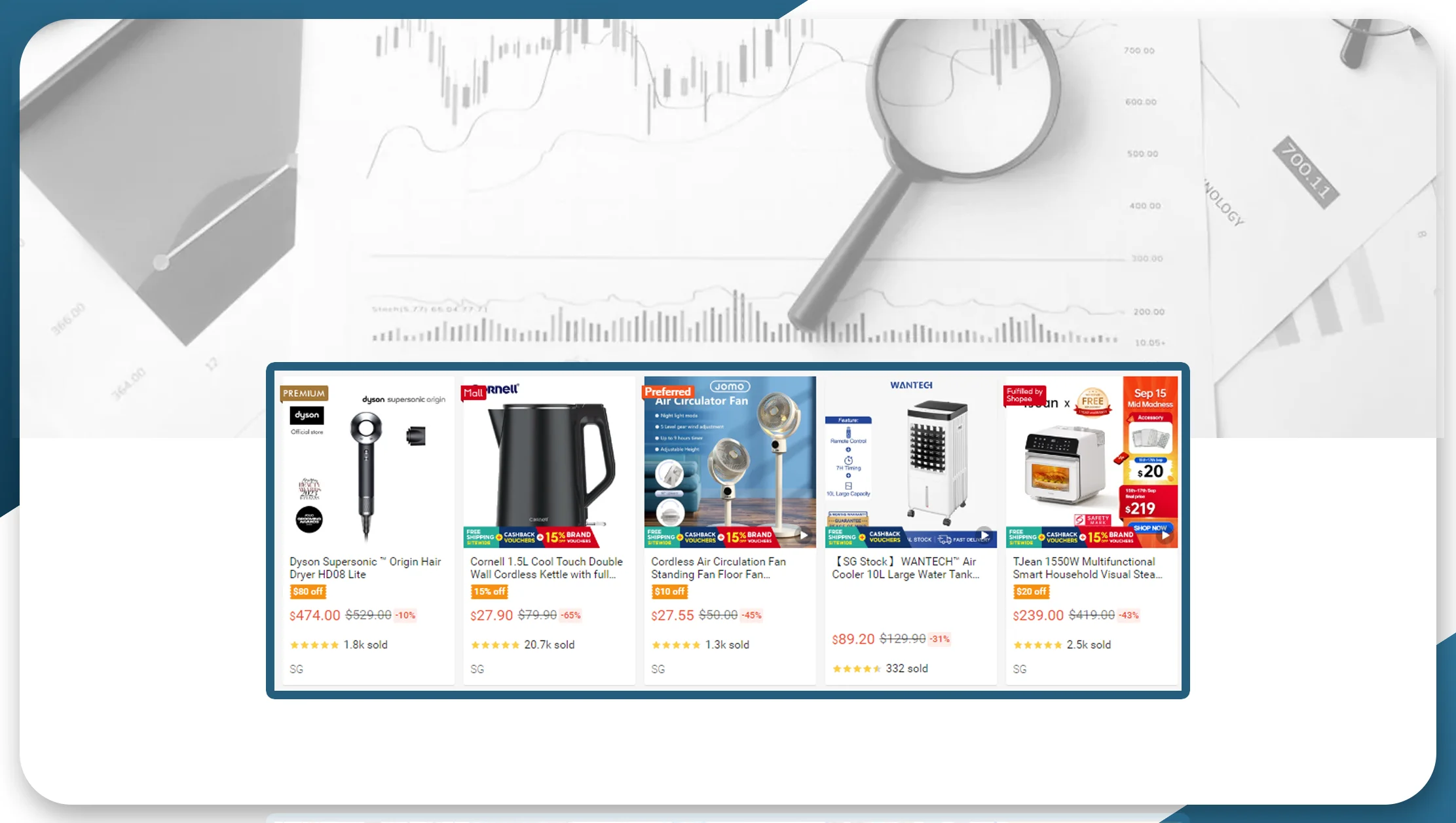
Competitor Price Monitoring: Scraping eCommerce product data from Shopee and Lazada allows businesses to monitor competitors' prices and adjust their pricing strategies accordingly.
Market Trend Analysis: Businesses can analyze consumer sentiment by collecting product ratings and reviews, which helps them understand market demand.
Stock Availability Tracking: Regular Lazada product data scraping and Shopee product data scraping can inform supply chain decisions by tracking product availability and inventory changes.
Automated Repricing: eCommerce sellers can use the scraped data to create dynamic pricing models and stay competitive in real-time.
Conclusion
In conclusion, knowing how to scrape product data from Shopee and Lazada is a powerful skill that offers invaluable insights for businesses and developers alike. While legal and technical challenges are involved, using the right tools like BeautifulSoup, Scrapy, or Selenium can help overcome these hurdles. By focusing on structured, high-quality data collection from Shopee and Lazada, businesses can unlock the full potential of eCommerce product data scraping for competitive advantage and strategic growth.
Whether you're interested in competitor analysis, market research, or optimizing pricing models, Shopee and Lazada product datasets are a goldmine. Leverage the power of accurate, real-time data with Real Data API’s. Start unlocking valuable insights and drive your business forward today!













